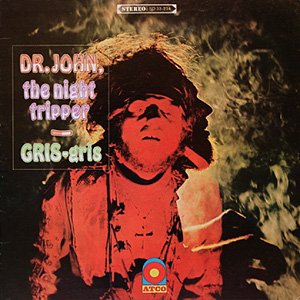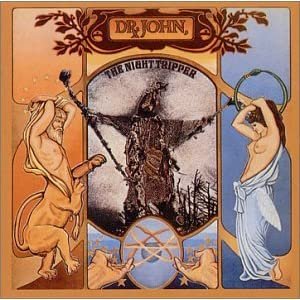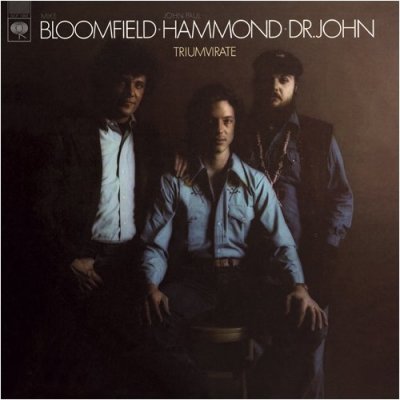Flower
retired
Biography
Combining New Orleans funk, glitter, and voodoo charm, pianist Dr. John was an energetic frontman in the early '70s ("Right Place, Wrong Time") and a behind-the-scenes mover before and since.
Rebennack got his first taste of show biz through his mother, a model who got young Malcolm's face on Ivory Soap boxes; his father ran a record store. By his early teens he was an accomplished pianist and guitarist. From hanging around his dad's store and at Cosimo Matassa’s studio, he got to know local musicians.
By the mid-’50s he was doing session work with Professor Longhair, Frankie Ford, and Joe Tex. He also helped form the black artists’ cooperative AFO (All for One) Records, and he was the first white man on the roster. By the start of the ’60s he had graduated to producing and arranging sessions for others (Lee Allen, Red Tyler, Earl Palmer) and recording some on his own (notably 1959’s “Storm Warning” on Rex Records). Rebennack’s reputation was based on his guitar and keyboard playing, but a hand wound suffered in a 1961 barroom gunfight forced him to take up bass with a Dixieland band.
In the mid-’60s Rebennack moved to L.A. and became a session regular, notably for producer Phil Spector. He played in various unsuccessful, wildly named bands like the Zu Zu Band (with Jessie Hill) and Morgus and the Three Ghouls. He also developed an interest in voodoo, to which he had been introduced by a mystical voodoo artist named Prince Lala in the ’50s at AFO. In 1968 Rebennack unveiled his new public persona of Dr. John Creaux the Night Tripper (later shortened to Dr. John) after a New Orleans crony, Ronnie Barron, decided not to front the act. With New Orleans associates (Hill as Dr. Poo Pah Doo and Harold Battiste as Dr. Battiste of Scorpio of bass clef), he recorded Gris-Gris for Atlantic in 1968. As indicated by the song titles - “I Walk on Gilded Splinters,” “Gris Gris Gumbo Ya Ya,” “Croker Courtbouillion” - it was a brew of traditional Creole chants, mystical imagery, and traces of psychedelia, an influence underscored by Rebennack’s onstage wardrobe (brightly colored robes, feathered headdresses, and a Mardi Gras–style retinue of dancers and singers).
Dr. John slowly acquired a loyal cult following, including Eric Clapton and Mick Jagger, who played on The Sun, Moon & Herbs. He moved to the more accessible regions of funk (backed by the Meters) on In the Right Place (#24, 1973). Produced by Allen Toussaint (who also played in Dr. John’s band on a 1973 tour and who produced Desitively Bonnaroo) “Right Place, Wrong Time” (#9) was his biggest hit, followed a few months later by “Such a Night” (#42). In 1973 Dr. John also worked in Triumvirate, a short-lived trio with Mike Bloomfield and John Hammond Jr. (John Paul Hammond). He appeared in the Band’s 1978 farewell concert film, The Last Waltz. In 1981 he released the first of several solo piano LPs, Dr. John Plays Mac Rebennack.
In the late ’80s, Dr. John began reaching back to his New Orleans roots - while also subtly mainstreaming his appeal. His 1989 In a Sentimental Mood collected old blues and saloon standards, and earned him his first Grammy, for his duet with Rickie Lee Jones on “Makin’ Whoopee!” Bluesianna Triangle detoured into jazz, with drummer Art Blakey and saxophonist David “Fathead” Newman, while Goin’ Back to New Orleans - with a cast of New Orleans all-stars featuring Al Hirt, Pete Fountain, Danny Barker, Alvin “Red” Tyler, and the Neville Brothers - won him another Grammy. By that time his gruff baritone voice had become familiar to millions through a succession of TV commercial jingles. In 1991 rap group P.M. Dawn sampled from one of Dr. John’s oldest tracks, “I Walk on Gilded Splinters”; two years later Beck sampled the same track for his folk-rap slacker anthem, “Loser.” In 1993 Dr. John published his autobiography, Under a Hoodoo Moon. Anutha Zone (1998) features a range of guests, notably members of the U.K. space-rock band Spiritualized.
from The Rolling Stone Encyclopedia of Rock & Roll (Simon & Schuster, 2001)







